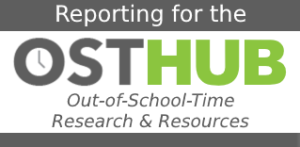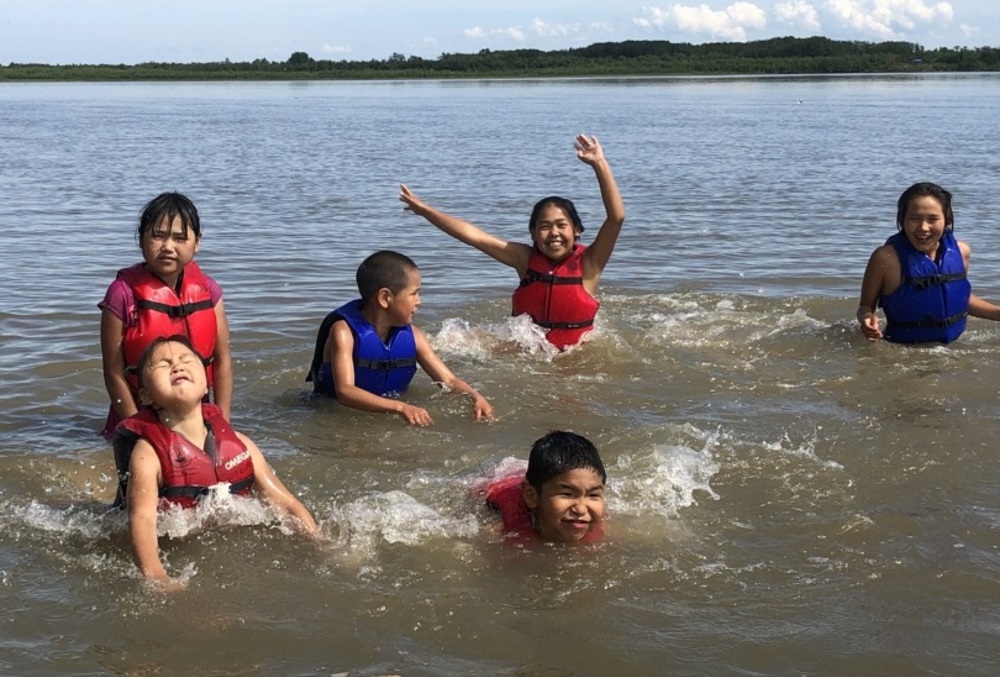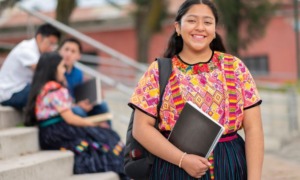When Camp Fire Alaska brings summer programs to tribal youth deep in the heart of the Alaskan wilderness, it isn’t as simple as packing up a van and driving there.
 The communities Camp Fire Alaska serves aren’t connected to the road system, so to get there requires at least one, and sometimes two flights at least one, and sometimes two flights — one of which is on a tiny bush plane — followed by riding on an ATV or snowmobile, depending on the weather, and, in some instances, a boat trip on the river.
The communities Camp Fire Alaska serves aren’t connected to the road system, so to get there requires at least one, and sometimes two flights at least one, and sometimes two flights — one of which is on a tiny bush plane — followed by riding on an ATV or snowmobile, depending on the weather, and, in some instances, a boat trip on the river.
Once there, everything is more expensive. Milk can cost upwards of $10 a gallon and gasoline is $2 more a gallon than in the cities. Sleeping arrangements for visiting staff can vary from a fully equipped teacher quarters to sleeping in a classroom or even outside in a tent.
In addition to the cost and logistics, Camp Fire Alaska also has to be mindful of cultural differences, especially as a non-Native entity working in tribal communities.
“These communities are very small and closed,” said Marnie Stewart, Camp Fire Alaska’s rural operations director. “Your staff, they really have to integrate themselves and connect with the people who are there in their off time and their on time, which is incredibly rare to have and a huge honor for us to be able to do.”
Expanding high-quality afterschool and summer enrichment programming in rural communities has long been the goal of advocates, but the added costs and complicated logistics have hampered efforts in achieving equity in areas off the beaten path.
Afterschool Alliance estimates there are 4.5 million rural kids across the country who want to attend afterschool but can’t, with low-income families or families of color disproportionately impacted.
Many families live in areas without afterschool programs. In other places, those programs are too expensive or not accessible by reliable transportation. Recently, a tight labor market has made staffing these programs even more difficult.
“The idea of equity and inclusion for rural students is about ensuring that kids, regardless of their zip code or background, have an opportunity to engage in the same positive learning opportunities as others,” said Thomas Azzarella, director of the Alaska Afterschool Network.
Complicating matters is the wide-ranging definition of what it means to be rural — which the census bureau simply defines as anything outside an urban area.
“It’s always interesting to see how people define rural,” said Brad Russell, executive director of the Rogue Valley Family YMCA in Medford, Oregon. His organization serves 12 mostly small towns in the state’s southern region and defines rural based on the working definitions his potential funding sources use.
Some foundations offer rural grants for cities of 30,000 people or less. Others define it as 20,000 or less and stipulate that it can’t be connected to a larger metropolitan hub, Russell said.
The longstanding barriers preventing kids from accessing out-of-school time programs — lack of funding, transportation — are compounded in rural areas.
“Our biggest afterschool deserts are going to be in very rural areas,” said Mark Cowsert, associate director of policy and partnerships for Missouri AfterSchool Network. “The limiting factor of quality rural opportunities is funding.”
Some states, including Missouri, offer little to no afterschool or summer program funding outside the federal money they gets from 21st Century Community Learning Centers.
Funding remains a barrier to access, despite bipartisan support for programming.
Missouri State Representative Louis Riggs, a Republican, said funding out-of-school time programs is a “no brainer.”
“We don’t want to be in loco parentis at every step of this child’s life, but [afterschool] is something that’s affordable and makes sense,” Riggs said.
Although Riggs supports funding for these programs, he acknowledged that the government has not given as much funding as advocates say is needed to meet the demand.
“There is funding available and so the question is, is it ever enough?” said Riggs. “The short answer: no.”
To find more funds, some states are getting creative. In Alaska, a portion of the state’s marijuana tax goes toward afterschool programs. Other states, like California, have earmarked huge pots of money from in the general budget in order to provide universal afterschool programs to every school district.
In addition to direct funding needs, advocates say rural communities need to have better access to the existing money streams and that afterschool grants need to be written with the rural population in mind and include culturally relevant programming.
Rural programs also have to navigate culture differently than in urban cities. In some regions, that means building trust over years with native communities and incorporating Indegenous knowledge and approaches to topics like wellness and survival. Other times, programs have to navigate open-carry gun laws, polarizing political beliefs held by families and, more recently, mask mandates and vaccination rules.
Russell said his YMCA board is composed of both “staunch Republicans” and “diehard Democrats,” so when it comes to politics, he has to take the middle ground.
“I wear a lot of purple,” Russell said. “We can’t just serve the blue community and it isn’t about just serving the red community.”
In the meantime, many of the kids who need afterschool and summer enrichment the most — those from low-income families, who are more likely to be impacted by trauma and live in areas lacking economic opportunity — don’t have access to such programs.
In Alaska, a state plagued by high rates of child abuse, neglect, sexual assault, drug use, suicide and teen pregnancy, Azzarella said there are 50,000 kids who need a program but don’t have one.
He admits there is no easy fix. But rural equity is the conversation the field is having and one it will continue to have, he added.
“Until we start looking at that every kid matters in that equation,” Azzarella said, “then we’re not working on equity.”






























